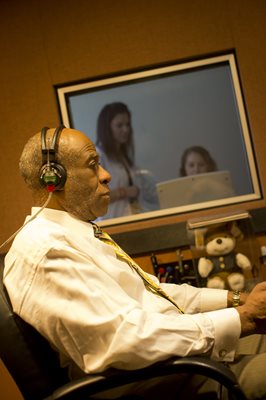 At the Pennsylvania Ear Institute, our goal is to provide you with the best possible hearing care and hearing solutions based upon your individual needs. We provide a comprehensive array of services related to evaluation, rehabilitation, and prevention of hearing impairment. We can help you protect your hearing from further deterioration through education about what affects your hearing, as well as the proper use and care of hearing protection devices. When hearing instruments are the best treatment option, we also pledge to make recommendations which are determined by your individual lifestyle, personal finances, and hearing needs.
At the Pennsylvania Ear Institute, our goal is to provide you with the best possible hearing care and hearing solutions based upon your individual needs. We provide a comprehensive array of services related to evaluation, rehabilitation, and prevention of hearing impairment. We can help you protect your hearing from further deterioration through education about what affects your hearing, as well as the proper use and care of hearing protection devices. When hearing instruments are the best treatment option, we also pledge to make recommendations which are determined by your individual lifestyle, personal finances, and hearing needs.
- Comprehensive diagnostic hearing evaluations for pediatric and adult populations
- Baseline auditory assessment and monitoring for musicians, and individuals who work in high noise levels
- Ototoxicity monitoring of chemotherapeutic treatments
- Otoacoustic emission measures
- Advanced Electrodiagnostic Studies, including:
- Auditory Evoked Brainstem Response
- BioMark (formerly BioMap)
- P300
- Middle Latency Evoked Potentials
- Advanced Diagnostic Vestibular Studies, including:
- Videonystagmography
- Vestibular Evoked Myogenic Potential (VEMP)
- Computer Dynamic Posturography
- Rotary Chair Assessment
- Dynamic Visual Acuity Assessment
- Hearing Instrument and Cochlear Implant candidacy evaluations
- Hearing Instrument fitting, verification of audibility with Speech Mapping, maintenance and repairs
- Independent evaluation and re-programming currently owned hearing instruments to optimize performance
- Custom ear protection
- Custom Musician ear protection
- Custom swim protection
- Assistive listening devices
- 45-day evaluation period on all hearing instruments with 100% refund if needs were not met
Cerumen, or ear wax, can be removed from the ear canal so that it does not interfere with listening or comfort, especially for individuals who wear hearing aids.
Mapping is the term used for programming a cochlear implant. Cochlear implant maps are set based on an individual’s response to sound through the cochlear implant device.
There are a variety of customized ear molds offered at PEI including swim plugs, musician’s earplugs, custom hearing protection, and custom in-the-ear monitors. Our audiologists will take impressions of the patient's ears in order to ensure the most exact fit, then the impression will be used to create ear molds specifically for the patient's needs.
Professional staff is available to help you with problems you may be having with your hearing aids. They can also spend time with you and discuss ways to make listening with hearing aids easier in your day-to-day life. Family members are welcome and encouraged to come with you and learn about your hearing aids.
Scheduled and performed by our licensed and nationally certified Hearing Healthcare Professional are subject to professional fees. Insurance often covers these services.
During your examination you will be tested using a series of low & high frequency words to determine your ability to understand verbiage within a conversation. We will also give you several words to repeat. The results will help us determine your percentage of hearing loss, your ability to understand speech and how hearing aids will improve your ability to hear.
At the hearing aid fitting, you will receive the hearing aids you selected. They are programmed based on a prescription that is specific to each person’s hearing loss. The hearing professional may make adjustments after you try the hearing aids to make sure the settings and fit are ideal for you.
Some minor hearing aid repairs can be done in the office setting in a short period of time; others will need to be sent to the manufacturer for repair. Your hearing professional can help determine what kind of a repair is necessary if you feel your hearing aid is not working properly.
Live Speech Mapping is a fitting process that uses probe microphones and live real-time speech to allow the patient and their family members to immediately see and understand the benefits of hearing aids and fitting adjustments.
Otoacoustic emission testing allows the audiologist to understand how the outer hair cells of your inner ear are working.
Tympanometry is an examination used to test the condition of the middle ear and mobility of the eardrum (tympanic membrane) and the conduction bones, by creating variations of air pressure in the ear canal.
Videonystagmography evaluates the function of the vestibular portion of the inner ear for patients who are experiencing symptoms of vertigo, unsteadiness, dizziness, and other balance disorders. Hearing evaluation tests are frequently combined with vestibular studies for the identification of inner ear disorders.
